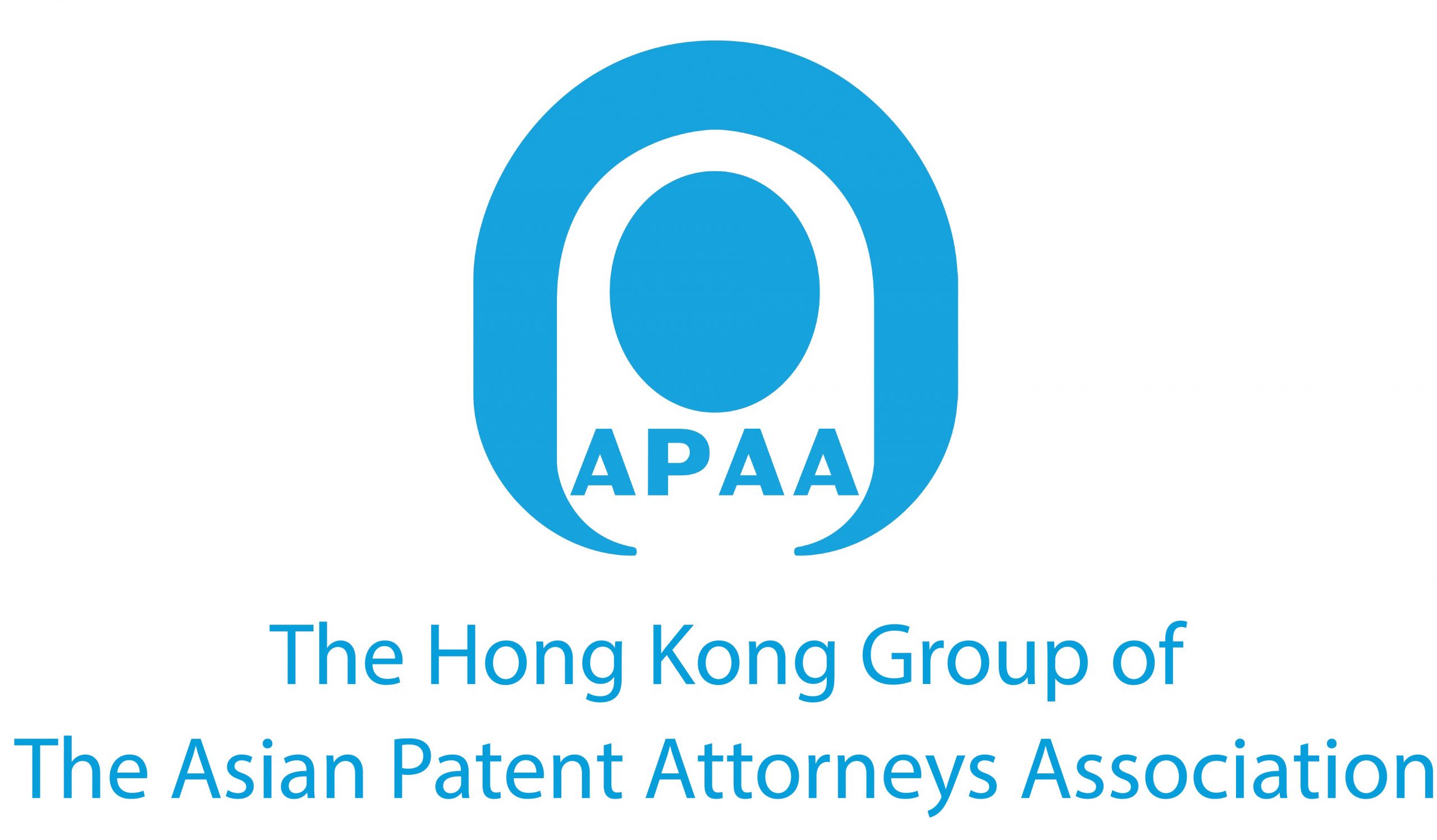The History of APAA Hong Kong Group
By C.K. Kwong
The Beginning
Big Time For Hong Kong
Membership and Objectives
History
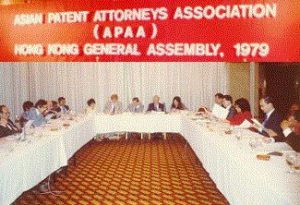
An account of the Group’s history can be conveniently provided by reference to 5-year intervals and important milestones in Hong Kong’s history.
In 1979 during its 5th Anniversary, the Hong Kong Group hosted the 5th General Assembly of the APAA. It was at this meeting that the logo of APAA was approved by the General Assembly and formally adopted by APAA. 193 participants took part in this meeting at the Plaza Hotel during the period from the 29th to 31st October 1979. Government officials including Sir Denys Roberts, then the Chief Justice of Hong Kong, Mr. Piers Jacobs, the Registrar General and Mr. E. R. Macock, the Registrar in charge of patents and trade marks were invited to join the Banquet at the Excelsior Hotel. The importance of proper handling and control of imported technology to ensure their intelligent use to benefit the recipients which helped to move developing countries into highly industrialised countries as well as the contributions which members of our association can make to the growth of the Asian economy were emphasised at the meeting.Senior members of our Group were recruited to serve on the Patent Steering Committee in 1986 to consider what patent system should be adopted in Hong Kong and, to draw up detailed proposals for the implementation of the system. Our senior members were also invited to serve on the Copyright Subcommittee of the Government’s Law Reform Commission in 1987 to review the law relating to copyright and registered design and to make comprehensive recommendations. Submissions on copyright law reforms were made by the Hong Kong Group to the Law Reform Commission in 1988 and 1989. In the meantime, the Hong Kong Group adopted a detailed set of rules in 1985 which were subsequently registered with the Societies Registry in 1986.
The Year 1989 which marked our 15th Anniversary was another important year in Hong Kong’s history. Long term plans for the future of Hong Kong were announced which included the US$16 billion new airport project at Chek Lap Kok. The new airport has been named this year as one of the “Top 10 Construction Achievements of the 20th Century”. The Prince and Princess of Wales came to lay the foundation stone for the new University of Science and Technology and officiate at the opening of the new Cultural Centre and Exhibition & Convention Centre. These boosted public confidence at a time when events which took place in China created concern about the arrangement for Hong Kong’s future. Intensified discussions on the drafting of the Basic Law (which largely re-enacts the policies set out in the Joint Declaration) took place and it was promulgated in April 1990 by the National People’s Congress. The Intellectual Property Department was established on 2nd July 1990 incorporating under it the Trade Marks, Patents and Registered Designs Registries. The 6th Meeting of the Committee for the Study of Harmonisation of Patent Laws was held here on 21st May 1990. The Hong Kong Group hosted 2 study groups, namely the Asian Design Protections Study Team of the Japan Patent Association and the Asian Intellectual Property System Research Committee of the APAA Japanese Group in 1992. The Hong Kong Group celebrated its 20th Anniversary in 1994 The Hong Kong Group hosted the 38th Council Meeting in 1995 with 888 participants from 43 countries. The cosmopolitan character of Hong Kong, the theme of east meets west, and the imminent arrival of a new epoch were amply reflected in that meeting. The opening started with the entrance of the auspicious lions of fortune and dotting of their eyes with red ink to bring them life and spirit exactly according to Chinese tradition. Guests were treated with the famous Chinese delicacy of braised superior shark fins in brown sauce while champagne, red and white wine were freely served at the farewell banquet. The grand finale was graced by the impressive 50 piece Silver and Bagpipe band of the Royal Hong Kong Police Force. Entertainment included no less than an English version of “Bao Ching Tien”, a Cantonese Opera concerning Judge Bao’s exploits and music performances by the three gorgeous western girl singers “Funky Divas”. The timely workshop on “Petty Patents and Hong Kong Intellectual Property Law Beyond 1997” provided a forum for experts from Australia, Europe, Hong Kong and China to address the 400 earnest participants at the fully seated JW Marriott Ballroom. A formal resolution was passed at the Council Meeting on the 14th November 1995 inviting patent attorneys from China to join as members of APAA with the objective of forming a Recognised Group.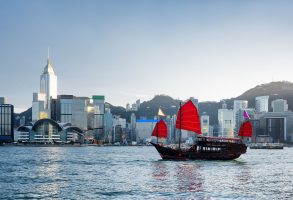
East Meets West © The Hong Kong SAR Government
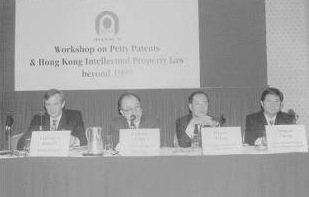
1995 38th Council Meeting
- The enactment of the Layout-Design (Topography) of Integrated Circuits Ordinance on the 31st March 1994.
- Hong Kong’s becoming a founding member of the World Trade Organisation on 1st January 1995.
- Agreement by the Sino-British Joint Liaison Group (“JLG”) consisting of representatives from the Chinese and UK governments in June 1999 to establish the Court of Final Appeal to replace the Judicial Committee of the Privy Council of the United Kingdom and localise the patent system, protection of industrial designs and copyright.
- Enactment of the Intellectual Property (World Trade Organisation Amendments) Ordinance 1996 on the 3rd May 1996.
- Enactment of the Plant Varieties Protection Ordinance in January 1997.
- Confirmation by the PRC and UK Governments to the UN, that specified treaties to which the PRC was a party would be applied to Hong Kong with effect from 1st July 1997 subject to Hong Kong’s decision to adopt the same and specified treaties which applied to Hong Kong before the Handover would continue to apply. These include the Paris Convention, Berne Convention, Universal Copyright Convention, Convention for the Protection of Phonograms against unauthorised duplication of their phonograms, Patent Co-operation Treaty, Convention on the Recognition and Enforcement of Foreign Arbitural Award, International Conventions relating to International Exhibitions, General Agreement on Tariffs and Trade (GATT), Agreement Establishing the World Trade Organisation (WTO) and Convention Establishing the World Intellectual Property Organisation (WIPO).
- Finally, on the 27th June 1997, Hong Kong’s patent, registered design and copyright laws which were previously dependent on the extension of the relevant UK legislation to Hong Kong became localised with the passing of the new (a) Patents Ordinance (Ord. No. 52 of 1997) together with Transitional Arrangement Rules and General Rules consisting of 438 pages providing a system of re-registering UK, European (UK) and PRC patents as standard patents and the filing of local “short term” patents; (b) Copyright Ordinance (Ord. No. 92 of 1997) consisting of 390 pages adopting an open qualification system and broadening the scope of protection; and (c) Registered Designs Ordinance (Ord No. 64 of 1997) together with its Design Rules consisting of 180 pages providing for Hong Kong’s own Designs Registry accepting direct applications and granting 25 year’s protection. With such a set of localised self-contained intellectual property laws, Hong Kong has maintained the continuity of its Common Law Jurisdiction with the previous British style legal system and a different independent jurisdiction from that in China when Hong Kong was restored to China on 1st July 1997.
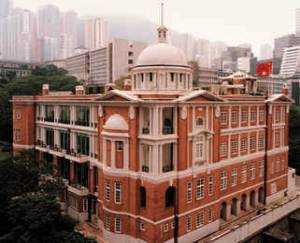
The Court of Final Appeal © The Hong Kong SAR Government
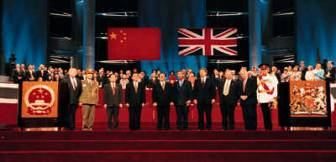
Establishment of the HKSAR © The Hong Kong SAR Government
As can be imagined, in a period of hectic and prolific legislative activity such as that outlined above, members of the Hong Kong Group have had a most challenging time to monitor these developments, consider the draft provisions, make submissions to relevant government bodies where appropriate, catch up with the laws when they were enacted, adapt their practice and office routine in order to function as a part of the new system and disseminate their knowledge to professional associates worldwide. The Group also arranged for a preliminary meeting of the then newly formed APAA Design Committee in August 1996. We also amended the rules of our Group at a members meeting held on 16th July 1997 to deal with issues in relation to membership and quorum for our meetings.
Now in 1999, our 25th Anniversary, 2 years have passed since the establishment of the Hong Kong SAR. So far, the principle of “one country, two systems”, which necessarily implies one country–two legal systems, is functioning well. The Group has established regular bi-annual working sessions with the Government Intellectual Property Department to discuss and exchange views on issues relating to all areas of intellectual property law, practice, systems and matters which affect the IP profession generally. We have encouraged members to write articles in “Hong Kong Lawyer” Magazine, awarded a book prize to the student with best results in intellectual property in the University of Hong Kong, organised luncheon talks on topics of current interest, synchronized joint submissions with other professional bodies in Hong Kong to advance the Group’s view points on current and proposed legislation for possible changes, supported and participated in government organised activities, co-operated with other organisations having an interest in intellectual property whether local or abroad, fostered ties of mutual friendship and understanding and promoted knowledge of intellectual property. With a view to serving the public and the profession, the Group is looking into the viability of setting up an education and accreditation system for registering patent attorneys locally. In the coming years, the Hong Kong Group will continue to contribute to the protection and advancement of intellectual property in an increasingly knowledge-based environment.

- Robin Bridge
(1982-1988) - C. K. Kwong
(1997-2003) - Ella Cheong
(1974-1982) - Anna Wu
(1988-1991) - Henry Wheare
(1991-1997)

APPLICATION FOR MEMBERSHIP

The Asian Patent Attorneys Association (“APAA”) is a non-governmental organisation dedicated to promoting and enhancing intellectual property protection in the Asian region (including Australia and New Zealand).
